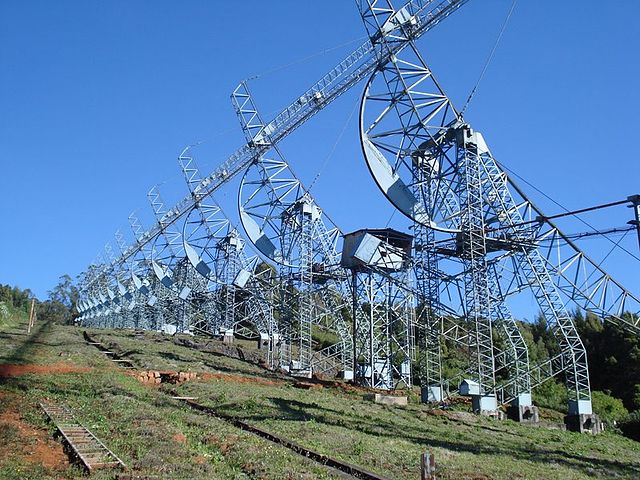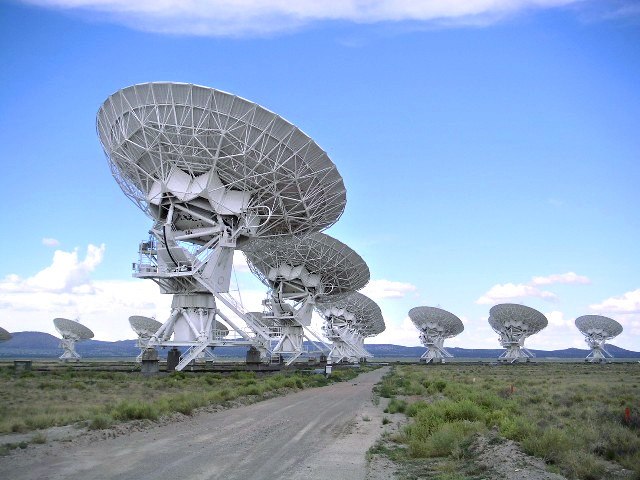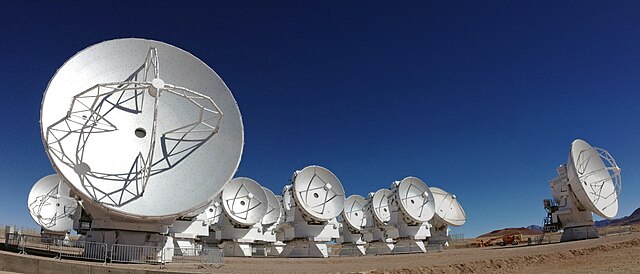A radio telescope is a specialized antenna and radio receiver used to detect radio waves from astronomical radio sources in the sky. Radio telescopes are the main observing instrument used in radio astronomy, which studies the radio frequency portion of the electromagnetic spectrum emitted by astronomical objects, just as optical telescopes are the main observing instrument used in traditional optical astronomy which studies the light wave portion of the spectrum coming from astronomical objects. Unlike optical telescopes, radio telescopes can be used in the daytime as well as at night.
The 64-meter radio telescope at Parkes Observatory as seen in 1969, when it was used to receive live televised video from Apollo 11
Antenna of UTR-2 low frequency radio telescope, Kharkiv region, Ukraine. Consists of an array of 2040 cage dipole elements.
Full-size replica of the first radio telescope, Jansky's dipole array of 1932, preserved at the US Green Bank Observatory in Green Bank, West Virginia.
Ooty radio telescope, a 326.5 MHz dipole array in Ooty, India
Radio astronomy is a subfield of astronomy that studies celestial objects at radio frequencies. The first detection of radio waves from an astronomical object was in 1933, when Karl Jansky at Bell Telephone Laboratories reported radiation coming from the Milky Way. Subsequent observations have identified a number of different sources of radio emission. These include stars and galaxies, as well as entirely new classes of objects, such as radio galaxies, quasars, pulsars, and masers. The discovery of the cosmic microwave background radiation, regarded as evidence for the Big Bang theory, was made through radio astronomy.
The Karl G. Jansky Very Large Array, a radio interferometer in New Mexico, United States
Chart on which Jocelyn Bell Burnell first recognised evidence of a pulsar, in 1967 (exhibited at Cambridge University Library)
The Atacama Large Millimeter Array (ALMA), many antennas linked together in a radio interferometer
An optical image of the galaxy M87 (HST), a radio image of same galaxy using Interferometry (Very Large Array – VLA), and an image of the center section (VLBA) using a Very Long Baseline Array (Global VLBI) consisting of antennas in the US, Germany, Italy, Finland, Sweden and Spain. The jet of particles is suspected to be powered by a black hole in the center of the galaxy.








